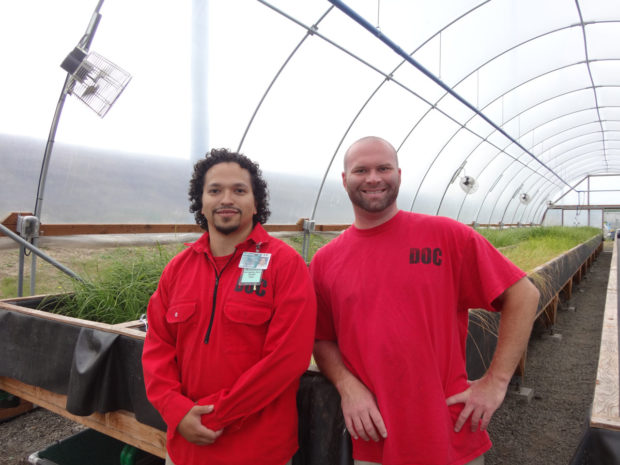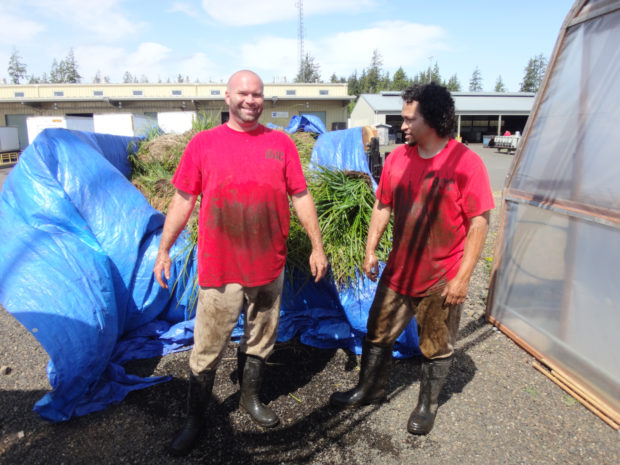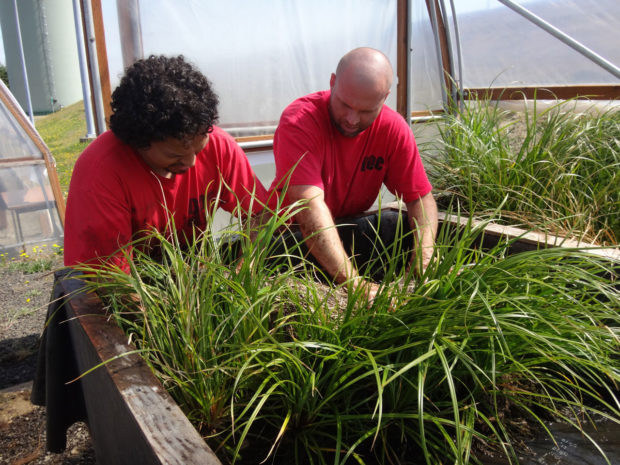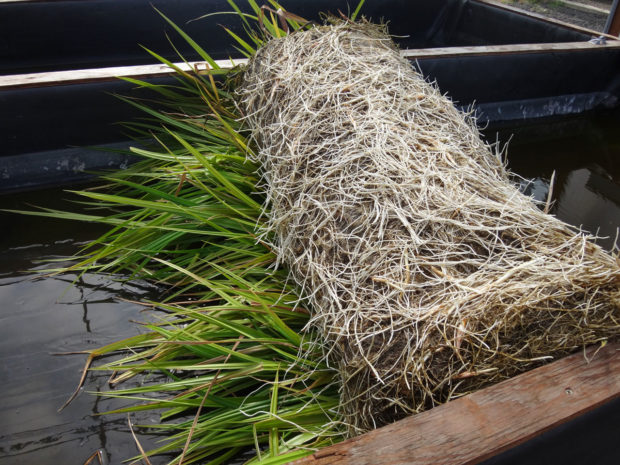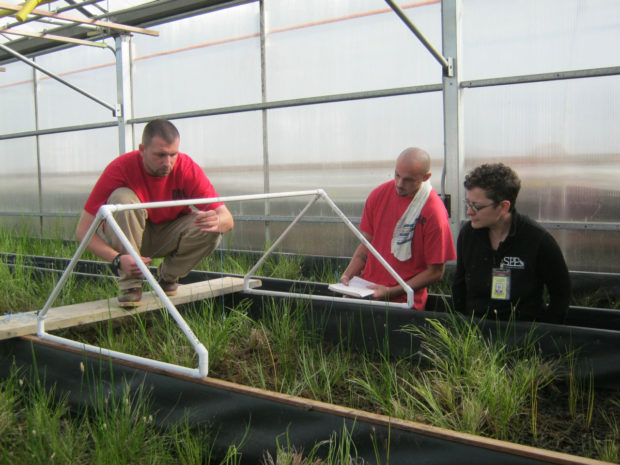Text by Erica Benoit, SPP Special Projects Manager.
I had the pleasure of interviewing Nichole Alexander, former SPP Butterfly Technician, on the 2-year anniversary of her release from the Mission Creek Corrections Center for Women (MCCCW). We spoke briefly about the impact of her SPP experience on her trajectory post-release, and even more about her long list of accomplishments in the last two years, including her graduation from Evergreen Tacoma.

Nichole Alexander presents on the Taylor’s checkerspot butterfly program to a working group in 2018. Photo by SPP staff.
Nichole, pictured above, spent three seasons in the Taylor’s checkerspot butterfly program at MCCCW before she released in April 2019. She said the most impactful part of her experience with SPP was the opportunity to work within a tight-knit team of individuals and across federal and state agencies, an experience in which she felt respected and valued. She also spoke to the therapeutic benefits of the program. Speaking of some major life events that happened while she was incarcerated, Nichole said,
“Being able to go out to the butterfly lab every day…the routine of being able to be in a work environment, an educational environment, to actually feel like we are giving back to the community, bettering myself and laying the foundation for my future, my kids’ future, was huge to pull me through some of the worst times that I have been through…I was actually able to find a light within myself in a very dark place.”
In addition, Nichole expressed that her experience with SPP laid the foundation for what she would accomplish next. In particular, she credits Kelli Bush, SPP Co-Director and Keegan Curry, former SPP Butterfly Coordinator, for providing the encouragement and support to apply to the Evergreen State College’s Tacoma campus while still incarcerated to attend post-release. In her opinion, they reminded her that she had potential.

Nichole Alexander and fellow technician Susan Christopher search for wild Taylor’s checkerspot larvae at Scatter Creek Wildlife Area, a reintroduction site for the butterfly. Photo by Keegan Curry.
She then jumped straight into finishing up her last quarter to earn her Associates Degree in Business Administration and Management from Tacoma Community College before starting her Law and Policy degree at Evergreen Tacoma. While pursuing higher education, she has also been heavily involved in giving back to the community. She organized a book drive for the youth residing at the Echo Glen Children’s Center and also worked with World Central Kitchen to provide thousands of meals to the homeless population. Professionally, she has worked for Ventures nonprofit as the Ready for Release Coordinator & Instructor. In this position, she briefly taught business & marketing to the incarcerated women at MCCCW before the program was suspended due to the COVID-19 pandemic. Currently, her professional endeavors focus strongly on providing support resources for the unsheltered population around Seattle. She works for REACH as their Waterfront Outreach Care Coordinator, as well as JustCARE’s Street Outreach Program Coordinator. But her work does not stop when she goes home, as she has worked hard to connect her academic studies with the practical reality of what she has witnessed through her jobs.

Nichole handing out meals with World Central Kitchen, while representing the organization she works for, REACH.
Nichole has now successfully completed her undergraduate coursework at Evergreen Tacoma and is set to graduate with a Bachelor of Arts in Law and Policy. She speaks highly of the support she received while attending Evergreen and said she cannot praise it enough for how welcoming they were to her. She especially appreciates the patience and support from some influential professors, like Dr. Gilda Sheppard and Dr. Anthony Zaragoza, and essential support staff as she navigated challenges related to re-entering society. Even more, she emphasizes the sense of community gained there. It’s clear that she made the most of her community involvement at Evergreen Tacoma; she helped start the Justice Involved Student Group there. She also spoke excitedly about her dedication and involvement in organizing Evergreen Tacoma’s virtual graduation ceremony in 2020, which was featured in a New York Times article. It was important for her and her fellow coordinators to go out of their way to make the graduates feel that their success was seen and celebrated. To do this, they organized custom gift boxes from a local party supply company, local flower bouquets, and family meals prepared by local restaurants for each of the graduates. The emphasis on supporting local businesses in this effort was especially needed in the heart of the COVID-19 pandemic. We only hope she is able to feel the same sense of accomplishment at her own graduation ceremony.
Nichole is not planning to slow down anytime soon. She was recently accepted into the Master of Public Administration (MPA) program, a recent expansion to the Evergreen Tacoma campus. Nichole plans to start that program this coming fall. She also communicated her plans to address issues within the carceral environment, including efforts to reduce recidivism and connect incarcerated mothers with their children. While incarcerated, Nichole helped organize the annual Girl Scout Beyond Bars (GSBB) sleepover to visit their moms at MCCCW. In particular, she helped connect the visiting girl scouts (including her own daughter) with the SPP butterfly program where they got to participate in fun activities that helped them earn badges! She continues to be a GSBB troop leader and expresses the importance of these opportunities in connecting girls impacted by incarceration with their mothers. In addition, WA Corrections recently featured Nichole and her daughter in a story about the importance of parent teacher teleconferences, a hopeful sign for future endeavors related to this effort.

Nichole shows her daughter, Brooklyn, around the SPP Taylor’s checkerspot butterfly program at MCCCW. She said it was so fun to bring her daughter to work because she had the coolest job in the world!
Speaking of the differences in her journey before and after incarceration, Nichole said “If you hear my history, for that person there’s no hope…Then to sit in the meetings that I sit in…and to work with the people that I work with today, there’s no ceiling. It’s unstoppable where you can be and how you can give back.” With that outlook, we know there are many more great things in store for Nichole Alexander, as well as those her life and work impacts.














 The artist told me that this piece will have more color on the masks before it’s complete; even though it’s not done yet, it looks so cool!
The artist told me that this piece will have more color on the masks before it’s complete; even though it’s not done yet, it looks so cool!





















